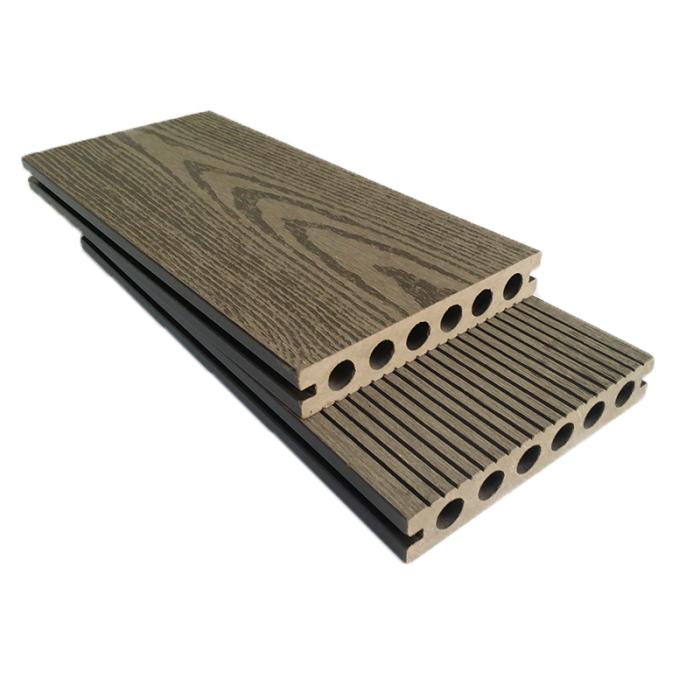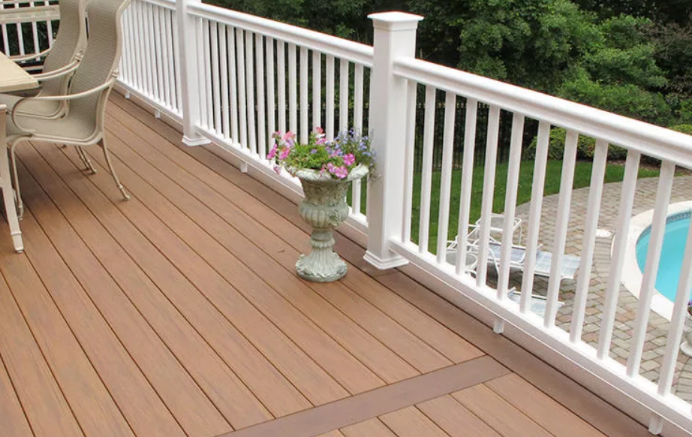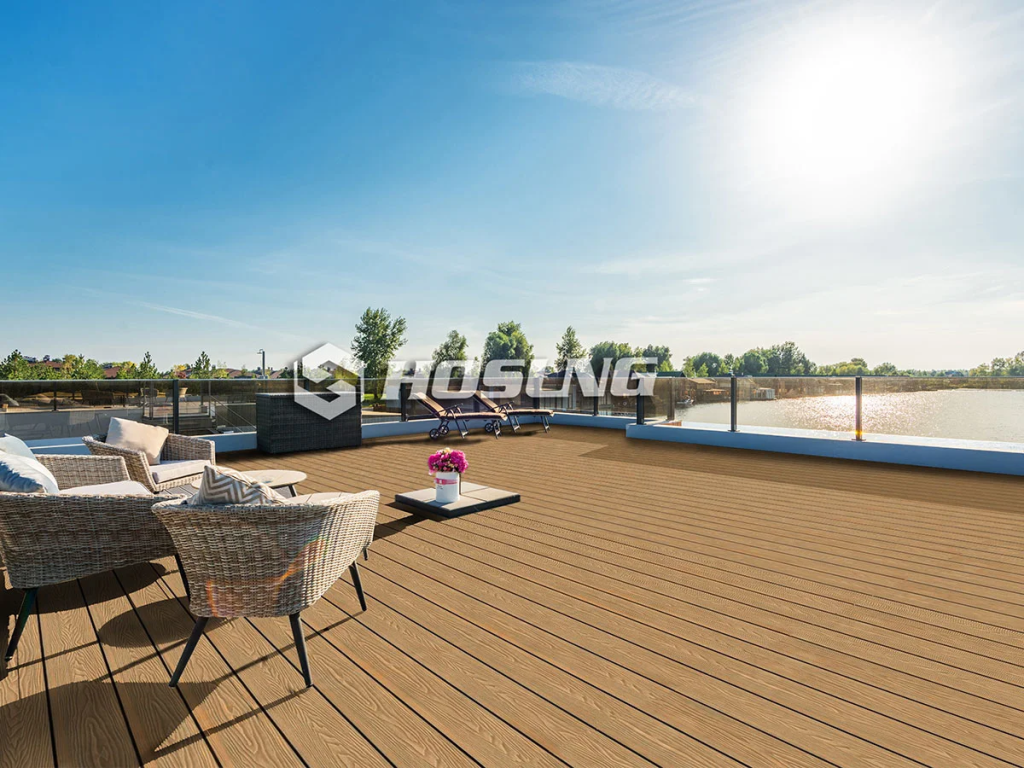Composite decking has become a preferred choice for homeowners and professionals alike in Canada due to its durability, low maintenance, and aesthetic appeal. Unlike traditional wood decks, composite decks are engineered using a mix of wood fibers, recycled plastics, and advanced polymers, providing long-lasting performance even in harsh Canadian climates. With extreme temperature fluctuations, heavy snowfall, and seasonal rain, choosing the right composite decking material is crucial for building a deck that is both functional and visually appealing In this article, we will explore the best types of composite decking available in Canada, their unique features, advantages, and applications, helping you make an informed decision for your outdoor project.
Table of Contents
1. Capped Composite Decking
Overview:
Capped composite decking, also known as capped polymer or protective-layer decking, is designed with a solid core covered by a durable outer layer. This layer provides additional protection against moisture, fading, and staining, extending the life of the decking material.
Advantages:
Superior Weather Resistance: The cap layer prevents water absorption, making it ideal for Canadian regions with heavy snowfall or frequent rain.
Low Maintenance: Unlike traditional wood, capped composite decks do not require painting, staining, or sealing.
Fade and Stain Resistance: The protective layer maintains the deck’s original color and prevents staining from food, drinks, or dirt.
Durable Surface: Resistant to scratches, dents, and general wear and tear from foot traffic.
Applications:
Capped composite decking is perfect for residential backyards, rooftop terraces, and high-traffic outdoor patios. Its low maintenance makes it an excellent choice for homeowners who want a beautiful deck without continuous upkeep.
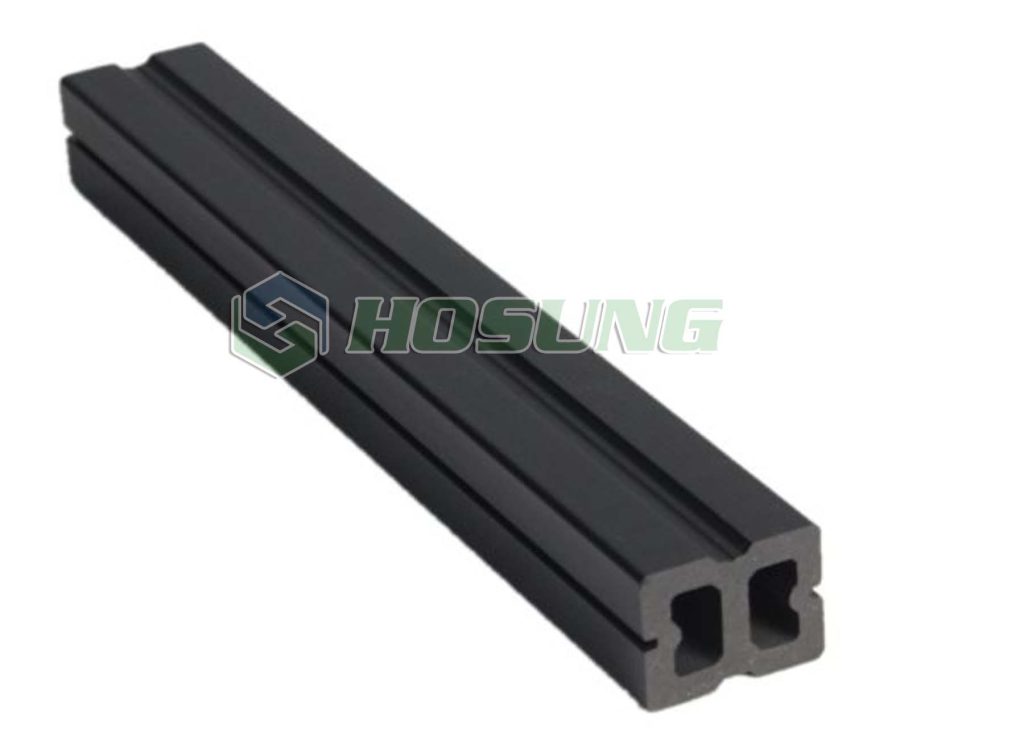
2. Hollow Composite Decking
Overview:
Hollow composite decking boards are designed with a hollow core, reducing the material weight while still offering strength and durability. These boards are lighter and easier to handle, making them ideal for larger decking projects.
Advantages:
Cost-Effective: Hollow boards use less material, making them a more budget-friendly option without sacrificing durability.
Lightweight: Easier to transport, cut, and install compared to solid boards.
Good Thermal Insulation: The hollow structure provides some insulation against heat, keeping the deck surface cooler during summer months.
Eco-Friendly: Many hollow composite boards incorporate recycled materials, supporting sustainable construction.
Applications:
Hollow composite decking is suitable for private patios, balcony decks, and community spaces where large areas need coverage at a lower cost. It’s ideal for DIY enthusiasts and professional contractors looking to save on installation time.
3. Solid Composite Decking
Overview:
Solid composite decking consists of dense, compact boards without any hollow cavities. These boards provide a more traditional feel and offer maximum strength and durability.
Advantages:
Robust and Sturdy: Solid boards are highly resistant to bending, warping, or twisting under heavy loads.
Long-Lasting: With a dense composition, solid decking can withstand extreme weather conditions, including heavy snow and ice.
Better Sound Absorption: Solid boards produce less hollow sound when walked on, offering a more natural walking experience.
Aesthetic Versatility: Can be easily machined, cut, and shaped for a custom look, ideal for intricate deck designs.
Applications:
Solid composite boards are perfect for main decks, poolside areas, and outdoor structures where high strength is required. They are also preferred in locations with heavy foot traffic due to their stability.
4. Grooved Composite Decking
Overview:
Grooved composite decking features grooves on the sides of the boards, allowing them to be installed with hidden fasteners. This design creates a smooth, fastener-free deck surface.
Advantages:
Sleek Appearance: No visible screws or nails, giving a clean, modern look.
Enhanced Safety: Smooth surface reduces tripping hazards.
Flexibility in Design: Boards can be installed in multiple directions, creating unique patterns such as diagonal or herringbone.
Improved Water Drainage: Grooves help channel water away, reducing the risk of slipping and water damage.
Applications:
Grooved decking is widely used for luxury residential decks, rooftop terraces, and commercial outdoor spaces where aesthetics are important. Its hidden fastener system makes it ideal for contemporary design-focused projects.
5. Textured Composite Decking
Overview:
Textured composite decking mimics the natural grain of wood, providing a realistic wood-like appearance without the maintenance of natural timber. The surface can feature embossed or contoured designs for added realism.
Advantages:
Authentic Wood Look: Offers the warmth and charm of natural wood while resisting decay.
Slip Resistance: The textured surface improves traction, making it safer during wet conditions.
Durable Finish: Resists scratches, fading, and moisture penetration.
Low Maintenance: No need for sanding or sealing to preserve its appearance.
Applications:
Textured boards are perfect for residential gardens, pool decks, and outdoor entertainment areas. Their natural look complements Canadian landscapes, blending seamlessly with trees, gardens, and stone patios.
6. Reversible Composite Decking
Overview:
Reversible composite decking boards offer two design faces, allowing users to choose between different colors, textures, or patterns for each side. This versatility enhances creative design possibilities.
Advantages:
Design Flexibility: Choose between two surface appearances, allowing unique deck layouts.
Extended Lifespan: Boards can be flipped if one side wears over time, prolonging usability.
Aesthetic Variety: Ideal for creating patterns or contrasting designs without purchasing additional materials.
Cost-Efficient: Maximizes value by providing two finishes in a single product.
Applications:
Reversible boards are ideal for large backyard decks, outdoor dining areas, or spaces where creative patterns are desired. Homeowners can achieve customized aesthetics without extra cost.
7. Enhanced UV-Resistant Decking
Overview:
Composite decking with advanced UV protection prevents sun-induced fading, discoloration, and surface degradation. This type is particularly beneficial for Canadian regions exposed to high summer sunlight.
Advantages:
Fade-Resistant: Maintains original color for years despite prolonged sun exposure.
Protects Core Material: UV protection prevents internal damage from heat and sunlight.
Durable Finish: Keeps surface smooth and visually appealing over time.
Minimal Maintenance: Requires only occasional cleaning to maintain appearance.
Applications:
UV-resistant composite decking is perfect for sun-exposed patios, rooftop terraces, and outdoor poolside areas. This type ensures long-term color retention even in open, sunny locations.
8. Water-Resistant or Waterproof Composite Decking
Overview:
Water-resistant composite boards are engineered to prevent moisture absorption, mold, and mildew growth. These boards are ideal for humid climates or decks near pools and water features.
Advantages:
Mold and Mildew Resistant: Reduces health risks and prevents surface discoloration.
Durable in Wet Conditions: Ideal for decks exposed to rain, snow, or pool splashes.
Low Maintenance: Eliminates the need for frequent sealing or treatments.
Enhanced Longevity: Prevents warping, swelling, and cracking due to moisture.
Applications:
Waterproof composite decking is excellent for pool decks, lakeside cottages, and areas with heavy rainfall. It ensures a safe, slip-resistant, and durable surface for outdoor activities.
9. Eco-Friendly Composite Decking
Overview:
Eco-friendly or sustainable composite decking uses recycled wood fibers, plastics, or other materials, reducing environmental impact while providing high-quality performance.
Advantages:
Sustainable Materials: Made from recycled plastics and wood fibers, reducing landfill waste.
Durable and Low Maintenance: Combines environmental benefits with long-term usability.
Safe for Outdoors: Resistant to mold, pests, and moisture without chemical treatments.
Contributes to Green Building: Ideal for eco-conscious construction projects and LEED-certified designs.
Applications:
Eco-friendly boards are ideal for environmentally conscious homeowners, public parks, and community spaces. They provide sustainability without compromising on strength or aesthetics.
10. Fire-Resistant Composite Decking
Overview:
Fire-resistant composite decking incorporates additives that improve the board’s resistance to ignition and slow the spread of flames. This feature is particularly important in wildfire-prone regions of Canada.
Advantages:
Enhanced Safety: Reduces risk of fire-related accidents.
Durable Performance: Boards retain strength and appearance even after exposure to high heat.
Peace of Mind: Provides additional safety in areas with dry summers and forested surroundings.
Compliance with Safety Codes: Meets or exceeds fire-resistance regulations for outdoor construction.
Applications:
Fire-resistant decking is suitable for outdoor spaces near forests, rural areas, or fire-prone regions. It is also ideal for commercial properties and public spaces requiring extra safety precautions.
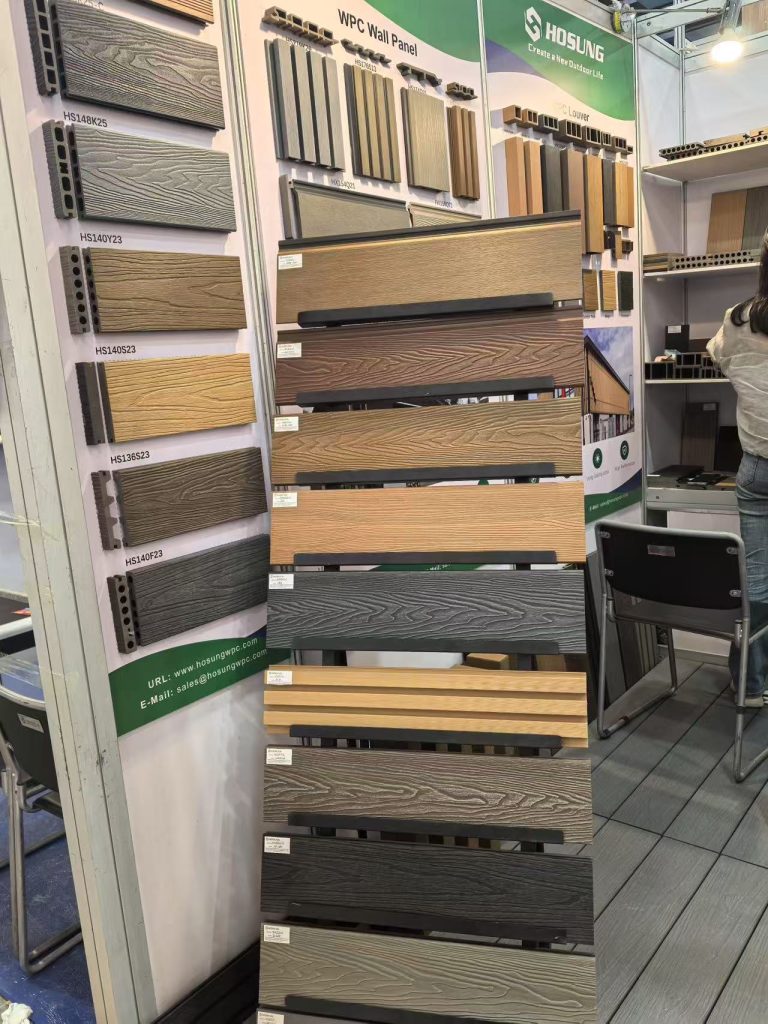
Conclusion
Choosing the best composite decking in Canada depends on factors such as climate, intended use, aesthetic preferences, and budget. From capped and hollow boards to eco-friendly and fire-resistant options, there is a wide variety of materials to suit every need.
For homeowners seeking low-maintenance elegance, capped and textured boards are ideal. Budget-conscious projects can benefit from hollow decking, while solid boards provide maximum durability for high-traffic areas. Meanwhile, specialized options such as reversible, UV-resistant, waterproof, and fire-resistant decks offer targeted solutions for unique requirements.
By understanding the benefits and applications of each type, Canadians can enjoy long-lasting, beautiful, and functional decks that withstand harsh weather while enhancing outdoor living spaces. Investing in the right composite decking ensures a reliable, low-maintenance, and attractive outdoor area for years to come.
If you are looking for composite decking manufacturer and supplier, welcome to contact Hosung WPC– professional composite decking manufacturer with more than 10 years of experience.

